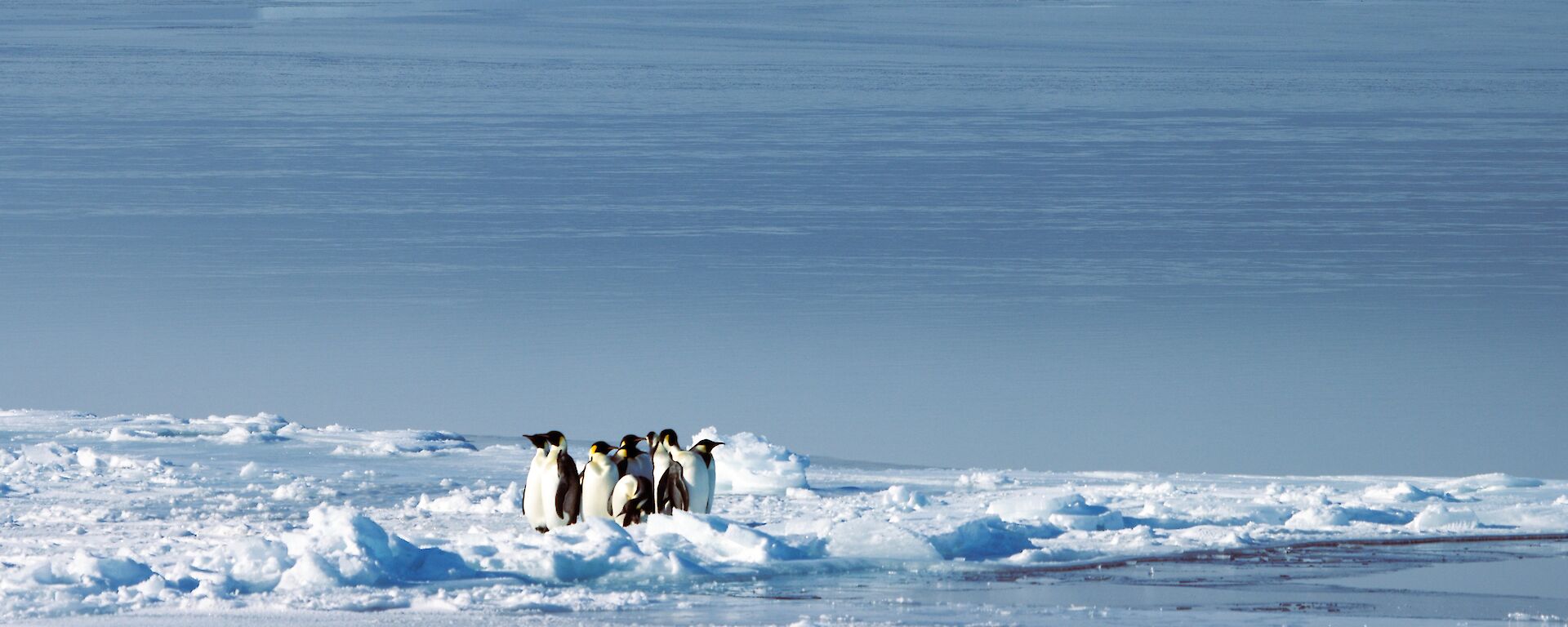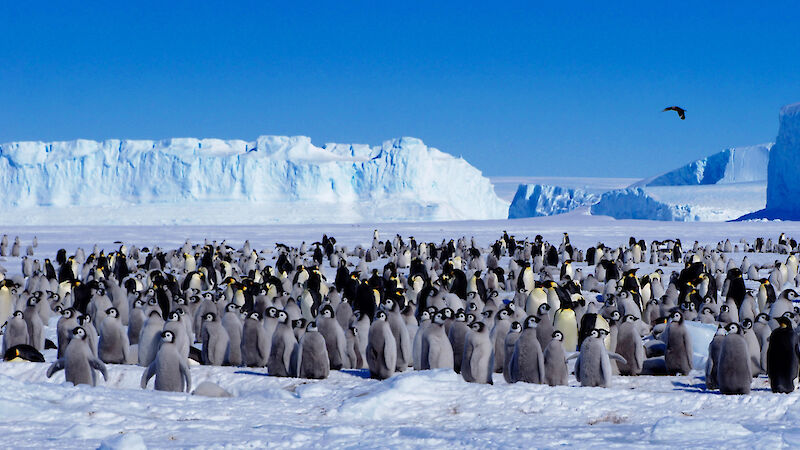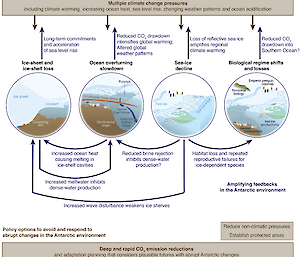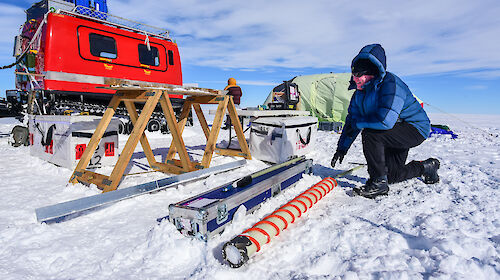Multiple abrupt changes are now beginning to develop across the Antarctic environment. These are changes that occur much faster than normal or expected, and once triggered they can be difficult or even impossible to reverse.
Abrupt changes are particularly relevant for decision making around future climate risks. They can result in ‘surprises’ that challenge effective adaptation to climate changes.
Multiple climate change pressures are now driving abrupt changes across Antarctica’s ocean, ice and biological systems:
- The unexpectedly rapid loss of Antarctic sea ice since 2014 is unfolding much faster than sea ice declines in the Arctic. Further, Antarctic sea-ice loss is potentially unstoppable even after global climate is stabilised.
- A marked slowdown in deep ocean circulation that is generated around the Antarctic continent is being observed and is expected to worsen. This slowdown in Antarctic overturning circulation could occur at twice the rate of weakening in its better-known North Atlantic equivalent.
- We are nearing the tipping point where several metres of sea-level rise from the West Antarctic Ice Sheet will become unstoppable, with major consequences for generations to come.
- The floating ice-shelf extensions of the Antarctic Ice Sheet will continue to melt and thin due to warming ocean waters, and abrupt collapse events due to heatwaves and wave-driven fracturing are also emerging.
- Substantial ecosystem transformations are underway in Antarctic marine and terrestrial environments. Of particular concern are impacts on sea-ice dependent species, including heightened extinction risk for emperor penguins as their breeding habitat is compromised.
The changes that are developing in the Antarctic environment have many interactions that amplify the risk of initiating abrupt and irreversible changes in this region. These interactions also feed back to worsen regional and global climate change impacts beyond the Antarctic region.
International cooperation that reduces greenhouse gas emissions so that global warming is limited to as close to 1.5°C as possible would provide the best chances of avoiding triggering multiple irreversible impacts in the Antarctic environment and their global consequences
Governments, businesses and communities can also strengthen their climate resilience by considering plausible futures that include multiple abrupt changes from Antarctica in their scenario planning for future climate and sea-level rise impacts.
A briefing document for decision-makers on this work will soon be published through the Antarctic Environments Portal. A policy briefing for Australian decision-makers is also available.
This work contributes to delivering the Australian Antarctic Science Decadal Strategy. It is a collaborative effort between the:
- Australian Antarctic Division
- Australian Centre for Excellence in Antarctic Science
- Securing Antarctica’s Environmental Future
- Australian Antarctic Program Partnership






